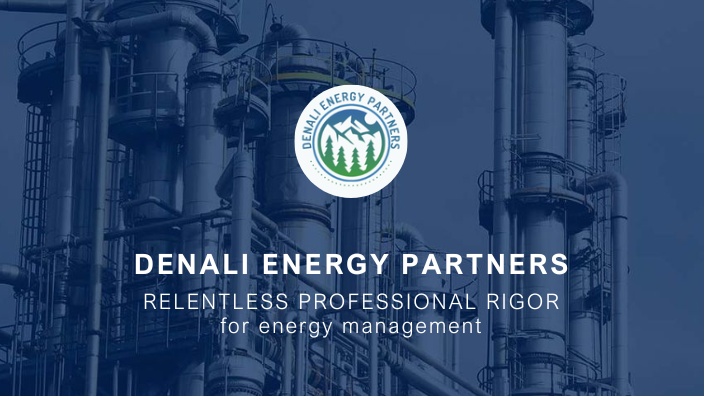The Greenhouse Effect in Mexico and Why It Matters for Industrial Parks
Denali-ep
| 18 de octubre de 2024
The Greenhouse Effect in Mexico and Why It Matters for Industrial Parks
The greenhouse effect is not just a global concern; it also has direct local impacts, particularly in industrial parks. Understanding this phenomenon is crucial for efficiently managing industrial operations and minimizing environmental impacts. In this article, we will explore the greenhouse effect in Mexico and its significance for industrial parks.
What is the Greenhouse Effect?
The greenhouse effect is a natural process where certain gases in the atmosphere trap heat from the sun, forming a protective layer that maintains Earth’s temperature at levels suitable for life. However, human activities have amplified this effect, contributing to global warming.
Components of the Greenhouse Effect
Greenhouse Gases:
- Carbon Dioxide (CO2): Emitted from burning fossil fuels and deforestation.
- Methane (CH4): Released by agricultural activities, livestock, and waste management.
- Nitrous Oxides (NOx): Produced by combustion and fertilizer use.
- Water Vapor: The most abundant gas, influenced by the levels of other greenhouse gases.
Sources in Mexico
In Mexico, industrial parks are significant sources of greenhouse gases due to their heavy energy usage and industrial processes that release pollutants.
The Greenhouse Effect in Mexico and its Impact on Industrial Parks
Current Situation
Mexico faces major challenges due to rising greenhouse gas emissions. Industrial parks, as centers of intensive activity, contribute heavily to this problem.
Relevant Data and Statistics
Statistics show increasing temperatures and changing climate patterns that directly affect industrial operations and the efficiency of industrial parks.
Climate and Environmental Impacts
Climate changes caused by the greenhouse effect are leading to extreme weather events such as droughts and intense storms, which can disrupt industrial operations and increase costs.
Why the Greenhouse Effect is Important for Industrial Parks
How it Affects Industrial Production
Rising temperatures and extreme weather can damage the infrastructure of industrial parks, disrupt supply chains, and increase operational costs.
Regulations and Policies
Environmental regulations aimed at reducing emissions are evolving. Industrial parks must comply with these laws to minimize environmental impacts and improve sustainability.
Economic Impacts
The costs of adapting to new regulations and implementing clean technologies can be significant but offer opportunities to improve efficiency and reduce long-term expenses.
Strategies to Mitigate the Greenhouse Effect in Industrial Parks
Emission Reduction Technologies
Adopting advanced technologies to capture and reduce emissions is vital to complying with regulations and enhancing sustainability.
Renewable and Sustainable Energy
Integrating renewable energy sources, such as solar and wind, can significantly reduce the carbon footprint of industrial parks and lessen reliance on fossil fuels.
Energy Efficiency
Optimizing energy use through improvements in industrial processes and implementing energy-efficient practices can lower emissions and operational costs.

Case Studies in Mexico
Successful Projects
There are examples of industrial parks in Mexico that have successfully reduced emissions and improved sustainability through the adoption of clean technologies and renewable energy.
Lessons Learned
These cases provide valuable insights into how to tackle the challenges of the greenhouse effect and what strategies have proven effective.
Policies and Regulations in Mexico
National Laws and International Agreements
Mexico has signed international agreements and implemented national laws aimed at reducing greenhouse gas emissions, which directly impact industrial parks.
Government Initiatives
The Mexican government has launched several initiatives to promote sustainability in the industrial sector, including incentives for adopting clean technologies and renewable energy.
The Role of Businesses in Reducing the Greenhouse Effect
Corporate Responsibility
Companies located in industrial parks have a responsibility to adopt sustainable practices and reduce their environmental impact.
Sustainable Practices
Implementing sustainable practices not only helps comply with regulations but also improves efficiency and enhances corporate reputation.
Challenges and Opportunities
Current Challenges
Industrial parks face significant challenges, such as the need to invest in clean technologies and adapt to new regulations.
Opportunities for Green Growth
Despite these challenges, there are opportunities to innovate and grow in the renewable energy and energy efficiency sectors.
Future Trends
Technological Innovations
Technological innovations, such as advanced energy storage and smart grids, are transforming the landscape for industrial parks.
Projections and Expectations
It is expected that industrial parks will continue evolving toward more sustainable models, with greater adoption of clean technologies and energy-efficient practices.
Conclusion
The greenhouse effect has a profound impact on industrial parks in Mexico. Understanding how it works and how it affects industrial operations is essential to developing effective strategies to reduce emissions and improve sustainability. The adoption of clean technologies, energy efficiency, and compliance with regulations are key to ensuring a greener, more efficient future for industrial parks.
What is the greenhouse effect and why is it important for industrial parks in Mexico?
The greenhouse effect is the process by which certain gases in the atmosphere trap heat, contributing to global warming. It’s important for industrial parks because their energy-intensive operations can contribute significantly to greenhouse gas emissions, impacting both the environment and regulatory compliance.
How do industrial parks in Mexico contribute to the greenhouse effect?
Industrial parks contribute through emissions from energy consumption, industrial processes, and waste management. These activities release large amounts of greenhouse gases like carbon dioxide (CO2), methane (CH4), and nitrous oxides (NOx) into the atmosphere.
What regulations exist in Mexico to control emissions from industrial parks?
Mexico has national laws aligned with international agreements like the Paris Agreement, which set limits on greenhouse gas emissions. Industrial parks must comply with these regulations by adopting clean technologies and reducing their carbon footprint.
What can industrial parks do to reduce their greenhouse gas emissions?
Industrial parks can implement strategies like adopting renewable energy sources (e.g., solar and wind), improving energy efficiency in operations, and using advanced technologies to capture and reduce emissions.
What are the economic benefits of reducing greenhouse gas emissions in industrial parks?
Reducing emissions can lower operational costs over time through improved energy efficiency, reduce the risk of penalties for non-compliance, and enhance the company’s reputation for sustainability, potentially attracting more business opportunities.




